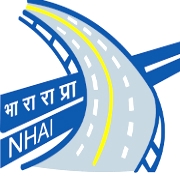Advanced Traffic Management System Upgraded
The National Highways Authority of India (NHAI) has unveiled an upgraded Advanced Traffic Management System (ATMS) with new standards and specifications for 2023. This initiative harnesses the power of artificial intelligence (AI) technology to enhance road safety, reduce incident response times, and improve digital enforcement on national highways and expressways. The move reflects NHAI’s commitment to embracing technological advancements for the benefit of road users.
Key Enhancements and Objectives
- Digital Highways: The updated policy emphasizes the development of integrated utility corridors along national highways for the deployment of optic fiber cables (OFC) infrastructure. This infrastructure will support the digital transformation of India’s road network.
- Video Incident Detection and Enforcement System (VIDES): The existing VIDS cameras will be replaced with VIDES cameras, enabling digital enforcement of traffic rules. VIDES cameras will be installed every 10 kilometers along national highways, with their feeds integrated into command and control centers located every 100 kilometers.
- Vehicle Speed Detection System (VSDS): VSDS is integrated into VIDES, optimizing the use of automatic number plate recognition (ANPR) cameras. This integration enhances speed enforcement capabilities.
- Traffic Monitoring Camera System (TMCS): Upgraded TMCS cameras will be positioned every 1 kilometer on national highways to automate the detection of accidents and stalled vehicles.
- Incident Identification: VIDES has the capability to identify 14 distinct incidents, including violations such as triple riding, helmet and seatbelt violations, wrong lane or direction driving, presence of animals on the highway, and pedestrian crossings.
- Comprehensive Incident Response: Depending on the detected incident, VIDES will trigger various responses, including alerting route patrol vehicles or ambulances, generating e-challans (traffic violation fines), relaying alerts to variable messaging boards, and sending notifications through the ‘Rajmargyatra’ mobile app to nearby travelers.
- Disaster Management: ATMS deployment can actively contribute to disaster management by providing critical inputs for effective planning and implementation. It facilitates online sharing of highway status and important information for both agencies and highway users.
Month: Current Affairs - October, 2023
Category: India Nation & States Current Affairs








